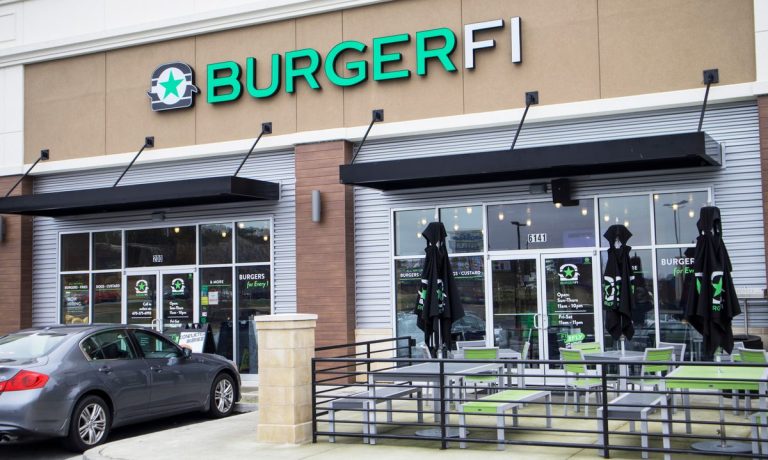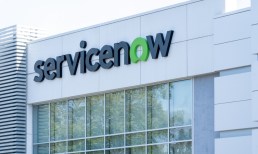As restaurants compete for customer loyalty, their rewards programs no longer provide the competitive advantage they once offered. Instead, mobile loyalty offerings have become table stakes, and brands are now challenged to consider alternative ways to keep customers coming through their virtual or physical doors.
North Palm Beach, Florida-based fast-casual brand BurgerFi, for one, which has over 100 locations in the United States and abroad, announced in late June a partnership payments and rewards platform Imprint to test a Visa card that provides cashback rewards for purchases from BurgerFi or its subsidiary Anthony’s Coal Fired Pizza & Wings, a casual dining pizza brand with 61 locations across eight states.
BurgerFi’s Chief Technology Officer Karl Goodhew spoke with PYMNTS about the origins of this partnership and how the company is looking to adopt strategies that have been successful in other retail sectors.
“We were looking for exciting opportunities to expand in the loyalty payments space and see what we could do,” he said. “My background is actually from big box retail. I come from JCPenney, Macy’s, Home Depot, and of course, they’ve had credit card programs in their systems for a very long time. So, I’ve seen the value, how it plays out in retail. … Customers come back because they see the benefit of the credit card.”
According to data from the March/April edition of PYMNTS’ Digital Divide series, “The Digital Divide: Regional Variations in U.S. Food Ordering Trends and Digital Adoption,” created in collaboration with Paytronix, which drew from a survey of more than 2,500 U.S. adults in February, about one in three restaurant customers use loyalty programs each month. Additionally, the majority of U.S. restaurant loyalty program members are motivated in part by free food and customized coupons or discounts.
Read more: New Research Shows That Regional Dining Quirks Matter in Tailoring Restaurant Offers
Advertisement: Scroll to Continue
Getting the Lay of the Land
While both BurgerFi and Anthony’s Coal Fired Pizza & Wings have their own loyalty programs, the brands are holding off on integrating the card into these offerings until the company has a better sense of how the card performs.
Goodhew noted that it would be “really not that much effort” to integrate the card and the programs, given that Imprint would be able to load points from card purchases right into the program, but that the company “didn’t feel it was appropriate” at this stage.
“Maybe we’ve run it for 90 days, say, and decide it’s not working and pull it,” Goodhew said. “We didn’t want to disappoint anyone.”
As it is, the company is “testing the waters” to see if, in fact, restaurant customers behave like those of retailers who have seen success with similar programs in the past. Since the company has not “seen anyone really do this in the restaurant space before,” there is still a fair amount of uncertainty. As such, BurgerFi is “dipping our toe in” to find out “if that value is there.”
Cross-Spending Opportunities
One of the advantages of offering the card over just having the loyalty program is that the card enables BurgerFi to get a sense of how its customers spend in other parts of their lives. Goodhew noted for instance that seeing where, in the aggregate, the brand’s customers tend to shop for groceries could “unlock” partnership opportunities that may not have become clear in the brand’s other research methods such as “talking to thousands and thousands of customers.”
“We never know what kind of data that’s going to unravel,” Goodhew said.
The card also has the advantage of giving the company a clearer sense of how BurgerFi fans engage with Anthony’s Coal Fired Pizza & Wings and vice versa, which opens up new opportunities, given each of the brands’ existing loyalty programs operates independently.
Goodhew noted that the move allows the company to look out for opportunities for “cross-redemption between our own brands” in a way that does not require “tearing up our loyalty programs completely.”
The BNPL Future of Restaurants
As Goodhew looked ahead to the future of restaurant loyalty and restaurant payments, he noted that Klarna specifically, as well as other “companies that operate in that space” are reporting that their customers have not only been using the option “to split their payments,” but also “to make regular purchases.” While he is not certain that the technology will catch on in the restaurant industry, he does believe that the potential is worth exploring.
In fact, PYMNTS research from the January edition of the “Main Street Merchant Index: Optimism Amid Inflation Edition,” created in collaboration with Melio, revealed that while only 8% of food, entertainment and accommodation businesses currently offer BNPL, a full 25% planned to implement BNPL in the next year.
Read more: Small Restaurants Jump on BNPL Bandwagon, Study Reveals
“I haven’t personally seen Klarna in the restaurant space yet,” Goodhew said. “Do you want to split a $50 meal for four ways? I’m not sure. … We’ve been having the conversation. We’re not there yet.”




